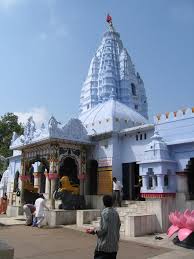



Hirakud Dam is built across the Mahanadi River, about 15 km from Sambalpur in the state of Odisha in India. Built in 1957, the dam is one of the world's longest earthen dam. Behind the dam extends a lake, Hirakud Reservoir, 55 km long. Hirakud Dam is the longest man-made dam in the world, about 16 mi (26 km) in length. It is one of the first major multipurpose river valley project started after India's independence. Before the devastating floods of 1937, Sir M. Visveswararya proposed a detailed investigation for storage reservoirs in the Mahanadi basin to tackle the problem of floods in the Mahanadi delta. In 1945, under the chairmanship of Dr. B. R. Ambedkar, the then Member of Labour, it was decided to invest in the potential benefits of controlling the Mahanadi for multi-purpose use. The Central Waterways, Irrigation and Navigation Commission took up the work. On 15 Mar 1946, Sir Howthrone Lewis, the then Governor of Odisha, laid the foundation stone of the Hirakud Dam. A project report was submitted to the government in June 1947. Pandit Jawaharlal Nehru laid the first batch of concrete on 12 April 1948. The dam was completed in 1953 and was formally inaugurated by Prime Minister Jawaharlal Nehru on 13 January 1957. The total cost of the project was Rs. 100.02 crores in 1957. Power generation along with agricultural irrigation started in 1956, achieving full potential in 1966.

Shree Shree Samaleswari, the presiding deity of Sambalpur, is a strong religious force in western part of Odisha and Chhattisgarh state of India. On the bank of the river Mahanadi the mother goddess Samaleswari is worshipped from ancient times as Jagatjanani, Adishakti, Mahalaxmi and Mahasaraswati. The region in which the temple is situated has a rich cultural heritage. Sambalpur region is popularly known as Hirakhanda from ancient times. Ptolemy has described the place as Sambalak, Acording to Tavernir, the French traveller, and Edward Gibbon, the English historian, diamonds were exported to Rome from Sambalpur.
The temple is of Sandhara order. It is built of a kind of stone durable as granite, cemented with lime mortar, the whole building is plastered, but in the course of time the surface has become mouldy. The temple comprises of two separate structures. The square sanctum sanctorum enshrining the deity is four step below the 10’ feet wide covered circumbulation, which is supported by 12 stone pillars. Eleven parswa devis (side Goddness), are embedded on the outer wall of the sanctum, so that the devotees can worhsip those deities during parikarma thourgh the vaulted circumbulation.
Sambalpur is situated in the eastern region of India at a distance of 320 k.m. from the Odisha State capital Bhubaneswar.It has direct train links with New Delhi, Kolkata, Chennai, Ahmedabad and Bokaro and Bombay though Jharsuguda Junction. Calcutta- Bombay National High way No.6 passes through the town while Sambalpur-Cuttack N.H. 42 starts from here which is linked with Kolkata - Chennai N.H. No.5 at Cuttack. Sambalpur is linked with N.H.200 at Jharsuguda (50 Kms.). Sambalpur has easy link with all places of the country. Nearest Airport is Raipur of Chhattisgarh (270 K.M.) and Bhubaneswar (320 K.M.) Air strips for small air craft are also available at Jamadarpali (15 K.M.) and Jhharsuguda (50 KM). For accommodation there are several Guest Houses, hotels (Govt. & Non. Govt) and Dharmsala in Sambalpur.

A village in the Sambalpur Subdivision, situated on the left bank of the Mahanadi, 23 kms. south of Sambalpur. The village contains the Leaning temple dedicated to Lord Siva, which was built in the reign of Baliar Singh, the fifth Raja of Sambalpur. The worship of Siva is said to have been initiated by a milkman(Gauda), who daily crossed the Mahanadi to a place on the bank where the underlying rock croped out. Here he daily offered his dole of milk, which was at once drunk up by the rock, and this miraculous circumstance led to enquiries, which ended in the construction of the present temple. Huma is a place of pilgrimage, and is also visited by strangers out of curosity to see the different kind of fish in the river. A great fair takes place at the foothill in March every year on the occasion of Sivratri. The presiding diety is Bimaleswar Siva. The special type of fish found here are called as 'Kudo' fish. They are said to be so tame that they will eat sweets and other foods from the hands of those who bathe close to the temple. During auspicious days they are called by their names and given the 'prasad' of the God. Here nobody tries to catch them as they are believed to be the assets of the God. Now about the main point of attraction i.e. the tilted structure of temple. From the investigation and interviews performed by our team, nobody able to give satisfying reply. The surprising thing is, the main temple tilted to one direction and other small temples tilted to some other direction. And within the temple complex i.e. within the boundaries of temple, everything found to be in tilted condition including the boundaries. Now again the angle of inclination is not changed since last 40/50 years as said by the villagers and priests. However the structure is tilted may be due to some geological reason, may be the earth crust is un-even in structure. About the inclination, its not possible to judge whether the angle is in a increasing trend or not. For that some sort of measurement mechanism should be given to analyse it very correctly as it is done in leaning tower of Pissa.